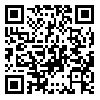Volume 8, Issue 3 (volume8, Issue 3 2020)
CPJ 2020, 8(3): 14-23 |
Back to browse issues page
Download citation:
BibTeX | RIS | EndNote | Medlars | ProCite | Reference Manager | RefWorks
Send citation to:



BibTeX | RIS | EndNote | Medlars | ProCite | Reference Manager | RefWorks
Send citation to:
farahmand N, . Chehardahcheric M, Rostami R. The Effect of Age and Levels of Skill on Mental Rotation among Female Swimmers. CPJ 2020; 8 (3) :14-23
URL: http://jcp.khu.ac.ir/article-1-3336-en.html
URL: http://jcp.khu.ac.ir/article-1-3336-en.html
Department of Sport Science, Shiraz University, Shiraz, Iran , nfarahmand68@gmail.com
Abstract: (8202 Views)
The aim of this study was to determine the effect of age and swimmers’ levels of somersaults skills on mental rotation. This study was conducted as a comparative causal research with a one-stage and post-event design. Participants were female swimmers in Shiraz, who were trained in somersaults. Sixty subjects were selected by the purposive sampling method and then divided into four groups (a group of 7 to 9-year-olds with low skills, a group of 7 to 9-year-olds with high skills, a group of 10 to 12-year-olds with low skills, and a group of 10 to 12-year-olds with high skills). The salto skill level was determined based on the average score of three judges. To measure mental rotation, the pen and image paper test (with a reliability of 0.75 by Cronbach's alpha method) was used. The results showed that there was no significant difference in mental rotation scores between age groups (p = 0638). However, the scores of mental rotation showed a significant difference between the two groups of skill level (P = .0001). Moreover, mental rotation changed with different skill levels. Therefore, it is possible to change mental characteristics of athletes, including mental rotation by means of skill training.
Type of Study: Research |
Subject:
Special
Received: 2020/10/15 | Accepted: 2021/01/9 | Published: 2021/01/9
Received: 2020/10/15 | Accepted: 2021/01/9 | Published: 2021/01/9
Send email to the article author
| Rights and permissions | |
 |
This work is licensed under a Creative Commons Attribution-NonCommercial 4.0 International License. |






